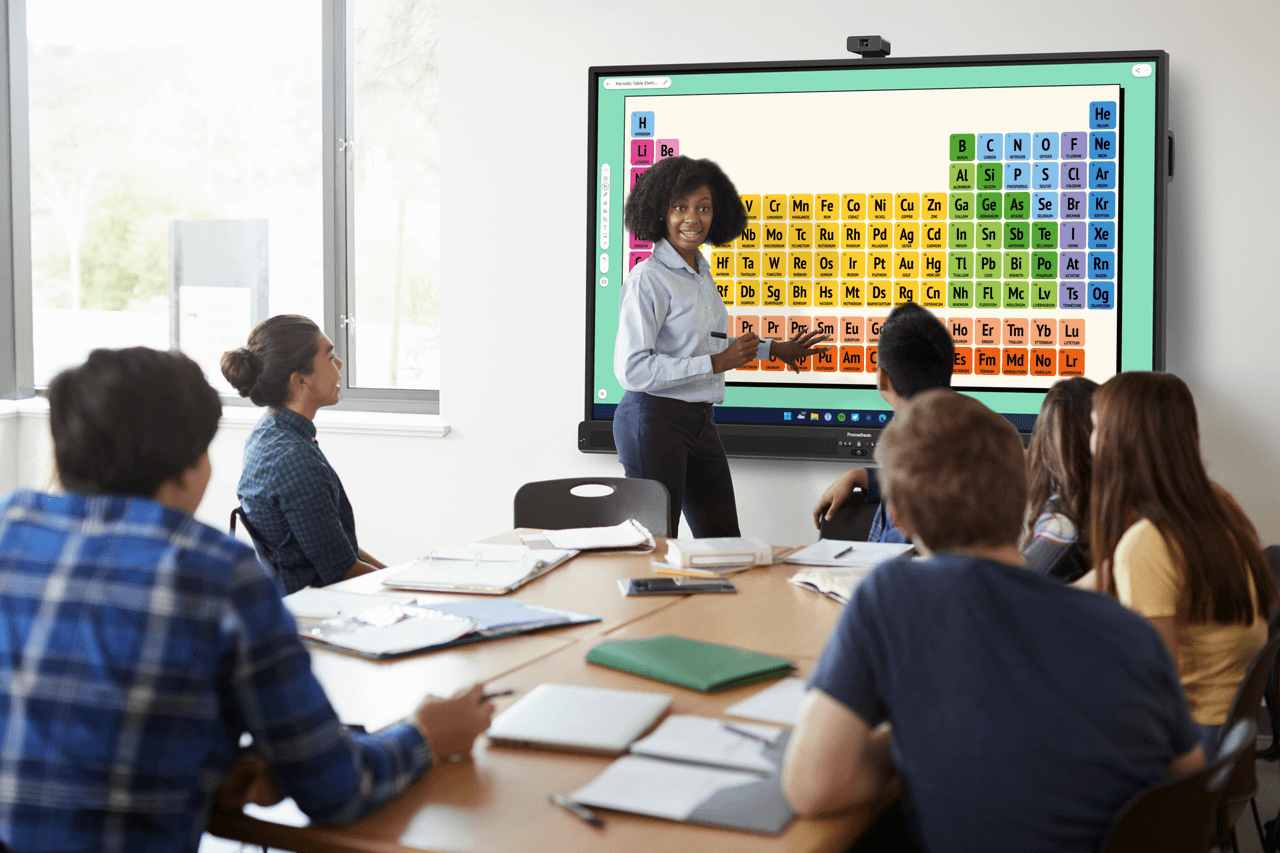Published on October 21st, 2022
How does technology help auditory learners?
9 minute read

Technology for auditory learners opens up new worlds and ways to interact with information.
Keep reading to discover the massive impact technology has on auditory learning and how you can harness this tool in your classroom.
Auditory learners learn best through listening and speaking. Here are some ways to accommodate them with technology:
How do auditory learners learn? It’s not just through hearing a concept explained to them, although that can be a small part of it. They learn through different methods of auditory experience – songs, jingles, repetition, and reenactments.
They also learn through hearing themselves speaking the information. When they engage with the information and recite what they are learning, it sticks in their minds more permanently.
Thanks to all the technology available today, there are more ways for students to interact with new concepts and lessons.
It’s best to use a combination of different auditory methods with people that learn by hearing and speaking. The more ways that a student interacts with the information, the more likely they are to retain what they are learning.
According to the University of Cincinnati, aural learners don’t just learn by hearing, but by hearing the information in different ways. This is why class discussions and mnemonic devices are so important.
Here are the best tools that you can utilize as a teacher to help your auditory learners. Use one of them or a combination.
Audiobooks
Audiobooks are a fantastic tool for students who might not enjoy reading. Maybe they struggle with reading because they’re easily distracted and forget what they just read.
Audiobooks make lessons come alive, especially if the books are read by a cast of voice actors. Read-aloud books help paint vivid pictures in a student’s mind.
Offer students the option to listen to audiobooks during reading time. You can choose to let them use their personal headphones, or you can hook up the Promethean ActivSound Bar to your interactive display and have a read-along with the whole class!
Podcasts
Podcasts are fun educational tools. There are plenty of options out there, but we’ve put together a list of our favorite podcasts by subject to save you some time.
History
- History Detective (Ages 8+) A look into stories from the past that aren’t usually told in textbooks. Aligns with most history curriculums.
- The Past & The Curious (Ages 6+) A deep dive into some of history’s most unique, but sometimes forgotten people and movements in history.
- HISTORY This Week (Ages 8+) A look back at the people, places, and moments that led us to where we are today.
English Language Arts
- Audio Literature Odyssey (Ages 12+) Classic literature narrated by writer Nikolle Doolin. Short stories, novels, poetry, and more.
- National Writing Project (K-12 educators) A variety of writing and education experts lead discussions on fostering a love of writing in students.
- Reading and Writing Podcast (Ages 10+) A collection of interviews with authors about their books, inspirations, and how they got started writing.
Science
- PlanetGeo (Ages 8+) In-depth discussions about our planet and the amazing features that make it habitable. Also teaches about the impact of earth studies on everyday life.
- Tumble (Ages 6+) Explores stories of scientific discovery. An award-winning podcast that fosters a love of science in kids.
- StarTalk (Ages 10+) A mixture of science, pop culture, and comedy that teaches kids topics in astronomy, physics, and more.
Math
- The Math Dude (Ages 12+) Tips and simple tricks for solving basic mathematics problems to help students strengthen fundamental knowledge.
- Breaking Math Discussions that make math accessible to everyone. Topics such as chaos theory and forbidden formulas are covered in detail.
Podcasts help facilitate a healthy classroom discussion, too. Auditory learners don’t just learn by hearing, but by speaking and discussing. Find a podcast where multiple hosts debate different sides of the subject matter. You could even use the polling functionality in ClassFlow to gauge where the class stands. Then, ask your students to discuss why they voted the way they did and which host they agreed with most and why.
You might even find some podcasts with a script that kids can read along as it goes. Reading the script is perfect for visual learners while hearing the podcast helps the auditory ones.
Read-alongs with voice recordings
More than just an audiobook, smart panels and screen sharing allow the entire class to read at the same time and follow along on the screen.
Read-along technology paired with an interactive display is beneficial for kids of any learning style. It helps visual learners because they connect what they see with what they hear. Kinetic learners can touch the words and follow what they hear.
Auditory learners love read-alongs because it helps them to avoid easy distractions. If a student struggles with reading, hearing the words read to them can help them match the sound of the word with the image on the page.
Class discussions
Students who learn aurally will benefit from class discussions. Thanks to interactive display technology, teachers can lead these discussions in new and interactive ways.
For example, if a student is too shy to speak up in class, they can write on the smart panel from the privacy of their tablet.
Seeing the discussion points written out on the board will help visual learners, too. Auditory learners can see what people are saying and contribute different points to the discussion.
Kids as teachers
Another way that auditory learners learn is by explaining the concepts to others. Allowing students to review what everyone learned helps them interact with the information and hear themselves recite what they know.
Interactive display technology is a lot of fun for young learners. Getting the chance to use it just like their teacher does might be enough to motivate a few students to want to teach their classmates.
This technology can also accommodate shy students or people who don’t enjoy being the center of attention. Splitting up into small groups and giving each person a chance to explain one thing they learned to the other two students in their group gives them the same experience.
Help students enjoy learning with Promethean
Promethean interactive displays for schools provide more tools for you as a teacher than ever before. From audiobooks to screen sharing for class discussions, there are a lot of different ways to encourage auditory learners to participate.
Ready to learn more? Click here to request your free ActivPanel live demo.




